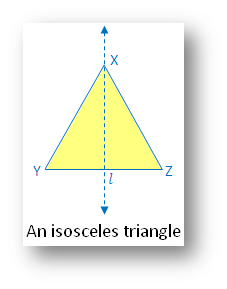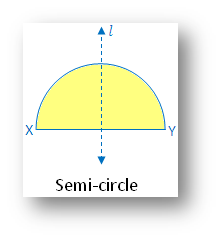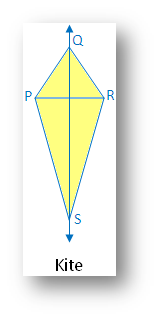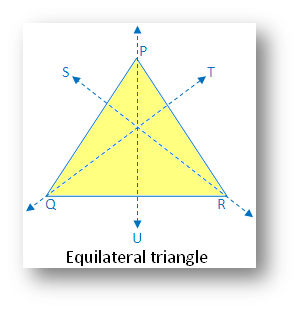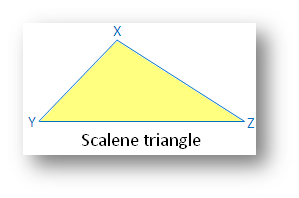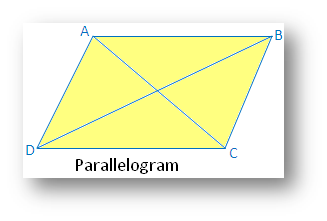🎄🎍🎄
శ్రీనివాస రామానుజన్ అయ్యంగార్
(డిసెంబర్ 22, 1887—ఏప్రిల్ 26, 1920)
భారతదేశానికి చెందిన గణిత శాస్త్రవేత్త.
20వ శతాబ్దంలో ప్రపంచ ప్రఖ్యాతి గాంచిన గొప్ప గణిత మేధావులలో ఒకరు.
రామానుజన్ తమిళనాడు లోని ఈరోడ్ అనే పట్టణంలో పుట్టి పెరిగాడు.
ఇతడికి పది సంవత్సరాల వయసులోనే గణితశాస్త్రం తో అనుభందం ఏర్పడింది.
చిన్న వయసులోనే గణితం పట్ల ప్రకృతి సిద్ధమైన ప్రతిభ కనపరిచేవాడు.
ఆ వయసులోనే ఎస్ ఎల్ లోనీ త్రికోణమితి మీద రాసిన పుస్తకాలను వంటపట్టించుకున్నాడు.
పదమూడు సంవత్సరాలు నిండే సరికల్లా ఆ పుస్తకాన్ని ఔపోసన పట్టడమే కాకుండా తన సొంతంగా సిద్ధాంతాలు కూడా రూపొందించడం ప్రారంభించాడు.
జీవితం
🔯బాల్యం
కుంబకోణంలోని సారంగపాణి వీధిలోని రామానుజం నివసించిన ఇల్లు
రామానుజన్ డిసెంబర్ 22, 1887 నాడు తమిళనాడు రాష్ట్రం లోని ఈరోడ్ పట్టణము నందు ఆయన అమ్మమ్మ ఇంట్లో జన్మించాడు.
రామానుజన్ తండ్రి
కె శ్రీనివాస అయ్యంగార్ ఒక చీరల దుకాణంలో గుమస్తాగా పని చేసేవారు.
ఈయన తంజావూరు జిల్లాకి చెందిన వారు.
తల్లి కోమలటమ్మాళ్ గృహిణి మరియు ఆ ఊరిలోని గుడిలో పాటలు పాడేది.
వీరు కుంబకోణం అనే పట్టణంలో, సారంగపాణి వీధిలో, దక్షిణ భారతదేశ సాంప్రదాయ పద్దతిలో నిర్మించబడ్డ ఒక పెంకుటింట్లో నివాసం ఉండేవారు.
ఇది ఇప్పుడు మ్యూజియంగా మార్చారు.
రామానుజన్ ఒకటిన్నర సంవత్సరాల వయసులో ఉండగా ఆయన తల్లి సదగోపన్ అనే రెండో బిడ్డకు జన్మనిచ్చింది.
కానీ మూడు నెలలు పూర్తవక మునుపే ఆ బిడ్డ కన్నుమూశాడు.
డిసెంబర్ 1889 లో రామానుజన్ కు మశూచి (అమ్మవారు) వ్యాధి సోకింది.
కానీ తంజావూరు జిల్లాలోని ఈ వ్యాధి సోకి మరణించిన చాలామంది లాగా కాకుండా బ్రతికి బయట పడగలిగాడు.
తరువాత రామానుజన్ తల్లితోపాటు చెన్నైకి దగ్గరలో ఉన్న కాంచీపురంలో ఉన్న అమ్మమ్మ వాళ్ళింటికి చేరాడు.
1891లో మళ్ళీ 1894 లో రామానుజన్ తల్లి ఇరువురి శిశువులకు జన్మనిచ్చినా ఏడాది తిరగక మునుపే వారు మరణించడం జరిగింది.
అక్టోబరు 1, 1892లో రామానుజన్ అదే ఊళ్ళో ఉన్న చిన్న పాఠశాలలో విద్యాభ్యాసాన్ని ప్రారంభించాడు.
మార్చి 1894లో ఇతడిని ఒక తెలుగు మాధ్యమ పాఠశాలకు మార్చడం జరిగింది.
రామానుజన్ తాత కాంచీపురం న్యాయస్థానం లోని ఉద్యోగం కోల్పోవడంతో,
రామానుజన్ తల్లితో సహా కుంబకోణం చేరుకుని అక్కడ కంగయాన్ ప్రాథమిక పాఠశాలలో చేరాడు.
నాన్న తరుపు తాత చనిపోవడంతో రామానుజన్ను మళ్ళీ మద్రాసులో నివాసం ఉంటున్న తల్లి తరుపు తాత దగ్గరికి పంపించారు.
కానీ అతనికి మద్రాసులో పాఠశాల నచ్చలేదు.
తరచూ బడికి ఎగనామం పెట్టేవాడు.
అతని తాత, అమ్మమ్మలు రామనుజన్ బడిలో ఉండేటట్లుగా చూసేందుకు వీలుగా ఒక మనిషిని కూడా నియమించారు.
కానీ ఆరు నెలలు కూడా తిరగక మునుపే కుంబకోణం ము పంపించేశారు.
రామానుజన్ తండ్రి రోజంతా పనిలో లీనమవడం మూలంగా చిన్నపుడు అతని బాధ్యతలు తల్లే చూసుకొనేది.
కాబట్టి తల్లితో చాలా గాఢమైన అనురాగం కలిగి ఉండేవాడు.
ఆమె నుంచి రామానుజన్ సాంప్రదాయాల గురించి, కుల వ్యవస్థ గురించి, పురాణాల గురించి తెలుసుకున్నాడు.
భక్తి గీతాలు ఆలపించడం నేర్చుకున్నాడు.
ఆలయాలలో పూజలకు తప్పక హాజరయ్యేవాడు.
మంచి ఆహారపు అలవాట్లు అలవరచుకున్నాడు.
ఒక మంచి బ్రాహ్మణ బాలుడిగా ఉండాలంటే ఈ లక్షణాలన్నీ తప్పని సరి.
కంగయాన్ పాఠశాలలో రామానుజన్ మంచి ప్రతిభ కనపరిచాడు.
నవంబరు 1897 లో పది సంవత్సరాల వయసు లోపలే ఆంగ్లము, తమిళము, భూగోళ శాస్త్రం, గణితం నందు ప్రాథమిక విద్య పూర్తి చేశాడు.
మంచి మార్కులతో జిల్లాలో అందరికన్నా ప్రథముడిగా నిలిచాడు.
1898 లో అతని తల్లి ఆరోగ్యవంతమైన శిశువుకు జన్మనిచ్చింది.
అతడికి లక్ష్మీ నరసింహం అని నామకరణం చేశారు.
అదే సంవత్సరంలో రామానుజన్ హయ్యర్ సెకండరీ పాఠశాలలో చేరాడు.
ఈ పాఠశాలలోనే మొట్ట మొదటి సారిగా గణితశాస్త్రంతో(formal mathematics) పరిచయం ఏర్పడింది.
🔯యవ్వనO
1909, జులై 14వ తేదీన రామానుజన్ కు జానకీ అమ్మాళ్ అనే తొమ్మిదేళ్ళ బాలికతో వివాహమైంది.
పెళ్ళైన తరువాత రామానుజన్ కు వరీబీజం వ్యాధి సోకింది.
ఇది శస్త్ర చికిత్స చేయడం ద్వారా సులభంగా నయమయ్యేదే కానీ వారికి తగినంత ధనం సమకూరక కొద్ది రోజుల పాటు అలానే ఉన్నాడు.
చివరకు 1910, జనవరి నెలలో ఒక వైద్యుడు స్వచ్చందంగా ముందుకు వచ్చి ఉచితంగా శస్త్రచికిత్స చేయడంతో ఆ గండం నుంచి బయటపడ్డాడు.
తరువాత ఉద్యోగ ప్రయత్నాలు ఆరంభించాడు.
CBM🔯
గణిత శాస్త్రజ్ఞులచే గుర్తింపు
అప్పట్లో కొత్తగా ఒక గణిత శాస్త్ర సమాజాన్ని ఏర్పరిచిన డిప్యూటీ కలెక్టర్ రామస్వామిని రామానుజన్ కలుసుకున్నాడు.
ఆయన పని చేసే ఆఫీసులో ఒక చిన్న ఉద్యోగం కోరి ఆయనకు తాను గణితం మీద రాసు కున్న నోటు పుస్తకాలను చూపించాడు.
వాటిని చూసిన అయ్యర్ తన రచనల్లో ఇలా గుర్తు చేసుకున్నాడు.
ఆ నోటు పుస్తకాలలోని అపారమైన గణిత విజ్ఞానాన్ని చూసి నేను ఆశ్చర్యపోయాను. అంతటి గొప్ప విజ్ఞానికి ఈ చిన్న రెవెన్యూ విభాగంలో ఉద్యోగం ఇచ్చి అవమాన పరచలేను
తరువాత రామస్వామి రామానుజన్ ను కొన్ని పరిచయ లేఖలు రాసి మద్రాసులో తనకు తెలిసిన గణిత శాస్త్రవేత్తల దగ్గరకు పంపించాడు.
అతని పుస్తకాలను చూసిన కొద్ది మంది అప్పట్లో నెల్లూరు జిల్లా కలెక్టరు గా పని చేస్తున్న రామచంద్ర రావు దగ్గరకు పంపించారు.
ఈయన భారతీయ గణిత శాస్త్ర సమాజానికి కార్యదర్శి కూడా.
రామచంద్ర రావు కూడా రామానుజన్ పనితనం చూసి అబ్బురపడి, అవి అతని రచనలేనా అని సందేహం కూడా వచ్చింది.
అప్పుడు రామానుజన్ తాను కలిసిన ఒక బొంబాయి ప్రొఫెసర్ సల్ధానా గురించి, అతని రచనలు ఆ ప్రొఫెసర్ కు కూడా అర్థం కాలేదని చెప్పాడు.
🔯ఆంగ్ల గణిత శాస్త్రవేత్తలతో పరిచయం
నారాయణ అయ్యర్, రామచంద్ర రావు, E.W. మిడిల్మాస్ట్ మొదలైన వారు రామానుజన్ పరిశోధనలను ఆంగ్ల గణిత శాస్త్రవేత్తలకు చూపించడానికి ప్రయత్నించారు.
లండన్ యూనివర్సిటీ కాలేజీకి దెందిన ఎం.జే.ఎం. హిల్ అనే గణితజ్ఞుడు రామానుజన్ పరిశోధనల్లో కొన్ని లోపాలున్నాయని వ్యాఖ్యానించాడు.
హిల్ రామానుజన్ ను విద్యార్థిగా స్వీకరించేందుకు అంగీకరించలేదుగానీ, రామానుజన్ పరిశోధనలపై మంచి సలహాలు మాత్రం ఇచ్చారు.
రామానుజన్ పై ఇతర గణిత శాస్త్రవేత్తల అభిప్రాయాలు
రామానుజన్ ఆ కాలంలో సుప్రసిద్దులైన ఆయిలర్, గాస్, జాకోబి మొదలైన సహజసిద్ధమైన గణిత మేధావులతో పోల్చదగిన వాడు.
రామానుజన్ లోని ప్రతిభను గుర్తించి ప్రోత్సహించిన హార్డీ అసలు తను గణిత శాస్త్రానికి చేసిన అత్యుత్తమ సేవ రామానుజాన్ని కనుగొనడమే అని వ్యాఖ్యానించడం విశేషం..
🔯ఇంగ్లండు జీవనO
మార్చి 17, 1914న రామానుజన్ ఇంగ్లండుకు ప్రయాణమయ్యాడు.
శాఖాహారపు అలవాట్లుగల రామానుజన్ ఇంగ్లండులో స్వయంపాకం చేసుకునే వాడు.
సరిగ్గా తినకపోవడం మూలాన,
నిరంతర పరిశోధనల వల్ల కలిగిన శ్రమ వలన,
ప్రతికూల వాతావరణ పరిస్థితుల ప్రభావం వల్ల చాలా తీవ్రమైన పరిశ్రమ చేసి 32 పరిశోధనా పత్రాలు సమర్పించాడు.
శరీరం క్రమంగా వ్యాధిగ్రస్థమైంది.
తీవ్రమైన అనారోగ్యంతో ఉన్నపుడు కూడా హార్డీతో 1729 సంఖ్య యొక్క ప్రత్యేకతను తెలియజెప్పి ఆయన్ను ఆశ్చర్యచకితుణ్ణి చేశాడు.
ఈ సంఘటన గణితంపై ఆయనుకున్న అవ్యాజమైన అనురాగాన్ని, అంకిత భావానికి నిదర్శనం.
ఆరోగ్య పరిస్థితి విషమించడంతో 1919 మార్చిలో భారతదేశానికి తిరిగి వచ్చాడు.
బొద్దుగా, కొంచెం నల్లగా కనిపించే రామానుజన్ ఇంగ్లండు నుంచి పాలిపోయిన అస్థిపంజరం వలే తిరిగి వచ్చిన రామానుజన్ ను చూసి ఆయన అభిమానులు చలించి పోయారు.
అనేక రకాల వైద్య వసతులు కల్పించినా ఆయన కోలుకోలేక పోయారు.
దాంతో ఆయన 1920, ఏప్రిల్ 26న పరమపదించారు.
శుద్ధ గణితంలో నంబర్ థియరీలోని ఇతని పరిశోధనలు, స్ట్రింగ్ థియరీ, క్యాన్సర్ పరిశోధనల వంటి ఆధునిక విషయాలలో ఉపయోగ పడుతూ ఉన్నాయి.
రామానుజన్ చివరిదశలో మ్యాక్-తీటా ఫంక్షన్స్ పై చేసిన పరొశోధనలు చాలా ప్రసిద్ధమైనవి.
ఆయన ప్రతిపాదించిన కొన్ని అంశాలు కొన్ని ఇప్పటికీ అపరిష్కృతం గానే ఉండటం విశేషం.
🔯వ్యక్తిత్వం
రామానుజన్ చాలా సున్నితమైన భావాలు, మంచి పద్దతులు కలిగిన బిడియస్తుడిగా ఉండే వాడు.
ఆయన కేంబ్రిడ్జిలో ఎన్నో కష్టాలను ఎదుర్కొంటూ క్రమశిక్షణ కలిగిన జీవితాన్ని గడిపాడు.
ఆయన జీవిత చరిత్రను రాసిన మొట్టమొదటి రచయిత ఆయన్ను శుద్ధ సాంప్రదాయవాదిగా పేర్కొనడం జరిగింది.
తనకు సంక్రమించిన సామర్థ్యం అంతా తమ ఇలవేల్పు దేవత అయిన నామగిరి ప్రసాదించినదేనని రామానుజన్ బలంగా విశ్వసించేవాడు.
తనకు ఏ కష్టం కలిగినా ఆమె సహాయం కోసం ఎదురు చూసేవాడు.
ఆమె కలలో కన్పించి ఎటువంటి సమస్యకైనా పరిష్కారం చూపించగలదని భావించేవాడు.
భగవంతునిచే ప్రాతినిధ్యం వహించబడని ఏ ఆలోచనా సూత్రం కానేరదు అని అప్పుడప్పుడూ అంటుటేవాడు .
రామానుజన్ అన్ని మతాలు ఒకటిగా నమ్మేవాడని హార్డీ ఒకసారి పేర్కొన్నాడు.
ఆయన ఆధ్యాత్మికతను భారతీయ రచయితలు అతిగా అర్థం చేసుకున్నారని వివరించాడు.
అంతేకాదు, రామానుజన్ యొక్క శుద్ధ శాఖాహారపు అలవాట్లను గురించి కూడా ప్రస్థావించాడు.
🔯గుర్తింపు
రామానుజన్ స్వరాష్ట్రమైన తమిళనాడు, ఆ రాష్ట్ర వాసిగా ఆయన సాధించిన విజయాలకు గుర్తుగా ఆయన జన్మదినమైన డిసెంబర్ 22 ను రాష్ట్ర సాంకేతిక దినోత్సవంగా ప్రకటించింది.
భారత ప్రభుత్వం 1962 వ సంవత్సరంలో ఆయన 75వ జన్మదినం నాడు, సంఖ్యా శాస్త్రంలో ఆయన చేసిన విశేష కృషిని కొనియాడుతూ స్మారక తపాలా బిళ్ళను విడుదల చేసింది.
🎄🎄🎄🎄🎄🎄🎄🎄🎄
శ్రీనివాస రామానుజన్ అయ్యంగార్
(డిసెంబర్ 22, 1887—ఏప్రిల్ 26, 1920)
భారతదేశానికి చెందిన గణిత శాస్త్రవేత్త.
20వ శతాబ్దంలో ప్రపంచ ప్రఖ్యాతి గాంచిన గొప్ప గణిత మేధావులలో ఒకరు.
రామానుజన్ తమిళనాడు లోని ఈరోడ్ అనే పట్టణంలో పుట్టి పెరిగాడు.
ఇతడికి పది సంవత్సరాల వయసులోనే గణితశాస్త్రం తో అనుభందం ఏర్పడింది.
చిన్న వయసులోనే గణితం పట్ల ప్రకృతి సిద్ధమైన ప్రతిభ కనపరిచేవాడు.
ఆ వయసులోనే ఎస్ ఎల్ లోనీ త్రికోణమితి మీద రాసిన పుస్తకాలను వంటపట్టించుకున్నాడు.
పదమూడు సంవత్సరాలు నిండే సరికల్లా ఆ పుస్తకాన్ని ఔపోసన పట్టడమే కాకుండా తన సొంతంగా సిద్ధాంతాలు కూడా రూపొందించడం ప్రారంభించాడు.
జీవితం
🔯బాల్యం
కుంబకోణంలోని సారంగపాణి వీధిలోని రామానుజం నివసించిన ఇల్లు
రామానుజన్ డిసెంబర్ 22, 1887 నాడు తమిళనాడు రాష్ట్రం లోని ఈరోడ్ పట్టణము నందు ఆయన అమ్మమ్మ ఇంట్లో జన్మించాడు.
రామానుజన్ తండ్రి
కె శ్రీనివాస అయ్యంగార్ ఒక చీరల దుకాణంలో గుమస్తాగా పని చేసేవారు.
ఈయన తంజావూరు జిల్లాకి చెందిన వారు.
తల్లి కోమలటమ్మాళ్ గృహిణి మరియు ఆ ఊరిలోని గుడిలో పాటలు పాడేది.
వీరు కుంబకోణం అనే పట్టణంలో, సారంగపాణి వీధిలో, దక్షిణ భారతదేశ సాంప్రదాయ పద్దతిలో నిర్మించబడ్డ ఒక పెంకుటింట్లో నివాసం ఉండేవారు.
ఇది ఇప్పుడు మ్యూజియంగా మార్చారు.
రామానుజన్ ఒకటిన్నర సంవత్సరాల వయసులో ఉండగా ఆయన తల్లి సదగోపన్ అనే రెండో బిడ్డకు జన్మనిచ్చింది.
కానీ మూడు నెలలు పూర్తవక మునుపే ఆ బిడ్డ కన్నుమూశాడు.
డిసెంబర్ 1889 లో రామానుజన్ కు మశూచి (అమ్మవారు) వ్యాధి సోకింది.
కానీ తంజావూరు జిల్లాలోని ఈ వ్యాధి సోకి మరణించిన చాలామంది లాగా కాకుండా బ్రతికి బయట పడగలిగాడు.
తరువాత రామానుజన్ తల్లితోపాటు చెన్నైకి దగ్గరలో ఉన్న కాంచీపురంలో ఉన్న అమ్మమ్మ వాళ్ళింటికి చేరాడు.
1891లో మళ్ళీ 1894 లో రామానుజన్ తల్లి ఇరువురి శిశువులకు జన్మనిచ్చినా ఏడాది తిరగక మునుపే వారు మరణించడం జరిగింది.
అక్టోబరు 1, 1892లో రామానుజన్ అదే ఊళ్ళో ఉన్న చిన్న పాఠశాలలో విద్యాభ్యాసాన్ని ప్రారంభించాడు.
మార్చి 1894లో ఇతడిని ఒక తెలుగు మాధ్యమ పాఠశాలకు మార్చడం జరిగింది.
రామానుజన్ తాత కాంచీపురం న్యాయస్థానం లోని ఉద్యోగం కోల్పోవడంతో,
రామానుజన్ తల్లితో సహా కుంబకోణం చేరుకుని అక్కడ కంగయాన్ ప్రాథమిక పాఠశాలలో చేరాడు.
నాన్న తరుపు తాత చనిపోవడంతో రామానుజన్ను మళ్ళీ మద్రాసులో నివాసం ఉంటున్న తల్లి తరుపు తాత దగ్గరికి పంపించారు.
కానీ అతనికి మద్రాసులో పాఠశాల నచ్చలేదు.
తరచూ బడికి ఎగనామం పెట్టేవాడు.
అతని తాత, అమ్మమ్మలు రామనుజన్ బడిలో ఉండేటట్లుగా చూసేందుకు వీలుగా ఒక మనిషిని కూడా నియమించారు.
కానీ ఆరు నెలలు కూడా తిరగక మునుపే కుంబకోణం ము పంపించేశారు.
రామానుజన్ తండ్రి రోజంతా పనిలో లీనమవడం మూలంగా చిన్నపుడు అతని బాధ్యతలు తల్లే చూసుకొనేది.
కాబట్టి తల్లితో చాలా గాఢమైన అనురాగం కలిగి ఉండేవాడు.
ఆమె నుంచి రామానుజన్ సాంప్రదాయాల గురించి, కుల వ్యవస్థ గురించి, పురాణాల గురించి తెలుసుకున్నాడు.
భక్తి గీతాలు ఆలపించడం నేర్చుకున్నాడు.
ఆలయాలలో పూజలకు తప్పక హాజరయ్యేవాడు.
మంచి ఆహారపు అలవాట్లు అలవరచుకున్నాడు.
ఒక మంచి బ్రాహ్మణ బాలుడిగా ఉండాలంటే ఈ లక్షణాలన్నీ తప్పని సరి.
కంగయాన్ పాఠశాలలో రామానుజన్ మంచి ప్రతిభ కనపరిచాడు.
నవంబరు 1897 లో పది సంవత్సరాల వయసు లోపలే ఆంగ్లము, తమిళము, భూగోళ శాస్త్రం, గణితం నందు ప్రాథమిక విద్య పూర్తి చేశాడు.
మంచి మార్కులతో జిల్లాలో అందరికన్నా ప్రథముడిగా నిలిచాడు.
1898 లో అతని తల్లి ఆరోగ్యవంతమైన శిశువుకు జన్మనిచ్చింది.
అతడికి లక్ష్మీ నరసింహం అని నామకరణం చేశారు.
అదే సంవత్సరంలో రామానుజన్ హయ్యర్ సెకండరీ పాఠశాలలో చేరాడు.
ఈ పాఠశాలలోనే మొట్ట మొదటి సారిగా గణితశాస్త్రంతో(formal mathematics) పరిచయం ఏర్పడింది.
🔯యవ్వనO
1909, జులై 14వ తేదీన రామానుజన్ కు జానకీ అమ్మాళ్ అనే తొమ్మిదేళ్ళ బాలికతో వివాహమైంది.
పెళ్ళైన తరువాత రామానుజన్ కు వరీబీజం వ్యాధి సోకింది.
ఇది శస్త్ర చికిత్స చేయడం ద్వారా సులభంగా నయమయ్యేదే కానీ వారికి తగినంత ధనం సమకూరక కొద్ది రోజుల పాటు అలానే ఉన్నాడు.
చివరకు 1910, జనవరి నెలలో ఒక వైద్యుడు స్వచ్చందంగా ముందుకు వచ్చి ఉచితంగా శస్త్రచికిత్స చేయడంతో ఆ గండం నుంచి బయటపడ్డాడు.
తరువాత ఉద్యోగ ప్రయత్నాలు ఆరంభించాడు.
CBM🔯
గణిత శాస్త్రజ్ఞులచే గుర్తింపు
అప్పట్లో కొత్తగా ఒక గణిత శాస్త్ర సమాజాన్ని ఏర్పరిచిన డిప్యూటీ కలెక్టర్ రామస్వామిని రామానుజన్ కలుసుకున్నాడు.
ఆయన పని చేసే ఆఫీసులో ఒక చిన్న ఉద్యోగం కోరి ఆయనకు తాను గణితం మీద రాసు కున్న నోటు పుస్తకాలను చూపించాడు.
వాటిని చూసిన అయ్యర్ తన రచనల్లో ఇలా గుర్తు చేసుకున్నాడు.
ఆ నోటు పుస్తకాలలోని అపారమైన గణిత విజ్ఞానాన్ని చూసి నేను ఆశ్చర్యపోయాను. అంతటి గొప్ప విజ్ఞానికి ఈ చిన్న రెవెన్యూ విభాగంలో ఉద్యోగం ఇచ్చి అవమాన పరచలేను
తరువాత రామస్వామి రామానుజన్ ను కొన్ని పరిచయ లేఖలు రాసి మద్రాసులో తనకు తెలిసిన గణిత శాస్త్రవేత్తల దగ్గరకు పంపించాడు.
అతని పుస్తకాలను చూసిన కొద్ది మంది అప్పట్లో నెల్లూరు జిల్లా కలెక్టరు గా పని చేస్తున్న రామచంద్ర రావు దగ్గరకు పంపించారు.
ఈయన భారతీయ గణిత శాస్త్ర సమాజానికి కార్యదర్శి కూడా.
రామచంద్ర రావు కూడా రామానుజన్ పనితనం చూసి అబ్బురపడి, అవి అతని రచనలేనా అని సందేహం కూడా వచ్చింది.
అప్పుడు రామానుజన్ తాను కలిసిన ఒక బొంబాయి ప్రొఫెసర్ సల్ధానా గురించి, అతని రచనలు ఆ ప్రొఫెసర్ కు కూడా అర్థం కాలేదని చెప్పాడు.
🔯ఆంగ్ల గణిత శాస్త్రవేత్తలతో పరిచయం
నారాయణ అయ్యర్, రామచంద్ర రావు, E.W. మిడిల్మాస్ట్ మొదలైన వారు రామానుజన్ పరిశోధనలను ఆంగ్ల గణిత శాస్త్రవేత్తలకు చూపించడానికి ప్రయత్నించారు.
లండన్ యూనివర్సిటీ కాలేజీకి దెందిన ఎం.జే.ఎం. హిల్ అనే గణితజ్ఞుడు రామానుజన్ పరిశోధనల్లో కొన్ని లోపాలున్నాయని వ్యాఖ్యానించాడు.
హిల్ రామానుజన్ ను విద్యార్థిగా స్వీకరించేందుకు అంగీకరించలేదుగానీ, రామానుజన్ పరిశోధనలపై మంచి సలహాలు మాత్రం ఇచ్చారు.
రామానుజన్ పై ఇతర గణిత శాస్త్రవేత్తల అభిప్రాయాలు
రామానుజన్ ఆ కాలంలో సుప్రసిద్దులైన ఆయిలర్, గాస్, జాకోబి మొదలైన సహజసిద్ధమైన గణిత మేధావులతో పోల్చదగిన వాడు.
రామానుజన్ లోని ప్రతిభను గుర్తించి ప్రోత్సహించిన హార్డీ అసలు తను గణిత శాస్త్రానికి చేసిన అత్యుత్తమ సేవ రామానుజాన్ని కనుగొనడమే అని వ్యాఖ్యానించడం విశేషం..
🔯ఇంగ్లండు జీవనO
మార్చి 17, 1914న రామానుజన్ ఇంగ్లండుకు ప్రయాణమయ్యాడు.
శాఖాహారపు అలవాట్లుగల రామానుజన్ ఇంగ్లండులో స్వయంపాకం చేసుకునే వాడు.
సరిగ్గా తినకపోవడం మూలాన,
నిరంతర పరిశోధనల వల్ల కలిగిన శ్రమ వలన,
ప్రతికూల వాతావరణ పరిస్థితుల ప్రభావం వల్ల చాలా తీవ్రమైన పరిశ్రమ చేసి 32 పరిశోధనా పత్రాలు సమర్పించాడు.
శరీరం క్రమంగా వ్యాధిగ్రస్థమైంది.
తీవ్రమైన అనారోగ్యంతో ఉన్నపుడు కూడా హార్డీతో 1729 సంఖ్య యొక్క ప్రత్యేకతను తెలియజెప్పి ఆయన్ను ఆశ్చర్యచకితుణ్ణి చేశాడు.
ఈ సంఘటన గణితంపై ఆయనుకున్న అవ్యాజమైన అనురాగాన్ని, అంకిత భావానికి నిదర్శనం.
ఆరోగ్య పరిస్థితి విషమించడంతో 1919 మార్చిలో భారతదేశానికి తిరిగి వచ్చాడు.
బొద్దుగా, కొంచెం నల్లగా కనిపించే రామానుజన్ ఇంగ్లండు నుంచి పాలిపోయిన అస్థిపంజరం వలే తిరిగి వచ్చిన రామానుజన్ ను చూసి ఆయన అభిమానులు చలించి పోయారు.
అనేక రకాల వైద్య వసతులు కల్పించినా ఆయన కోలుకోలేక పోయారు.
దాంతో ఆయన 1920, ఏప్రిల్ 26న పరమపదించారు.
శుద్ధ గణితంలో నంబర్ థియరీలోని ఇతని పరిశోధనలు, స్ట్రింగ్ థియరీ, క్యాన్సర్ పరిశోధనల వంటి ఆధునిక విషయాలలో ఉపయోగ పడుతూ ఉన్నాయి.
రామానుజన్ చివరిదశలో మ్యాక్-తీటా ఫంక్షన్స్ పై చేసిన పరొశోధనలు చాలా ప్రసిద్ధమైనవి.
ఆయన ప్రతిపాదించిన కొన్ని అంశాలు కొన్ని ఇప్పటికీ అపరిష్కృతం గానే ఉండటం విశేషం.
🔯వ్యక్తిత్వం
రామానుజన్ చాలా సున్నితమైన భావాలు, మంచి పద్దతులు కలిగిన బిడియస్తుడిగా ఉండే వాడు.
ఆయన కేంబ్రిడ్జిలో ఎన్నో కష్టాలను ఎదుర్కొంటూ క్రమశిక్షణ కలిగిన జీవితాన్ని గడిపాడు.
ఆయన జీవిత చరిత్రను రాసిన మొట్టమొదటి రచయిత ఆయన్ను శుద్ధ సాంప్రదాయవాదిగా పేర్కొనడం జరిగింది.
తనకు సంక్రమించిన సామర్థ్యం అంతా తమ ఇలవేల్పు దేవత అయిన నామగిరి ప్రసాదించినదేనని రామానుజన్ బలంగా విశ్వసించేవాడు.
తనకు ఏ కష్టం కలిగినా ఆమె సహాయం కోసం ఎదురు చూసేవాడు.
ఆమె కలలో కన్పించి ఎటువంటి సమస్యకైనా పరిష్కారం చూపించగలదని భావించేవాడు.
భగవంతునిచే ప్రాతినిధ్యం వహించబడని ఏ ఆలోచనా సూత్రం కానేరదు అని అప్పుడప్పుడూ అంటుటేవాడు .
రామానుజన్ అన్ని మతాలు ఒకటిగా నమ్మేవాడని హార్డీ ఒకసారి పేర్కొన్నాడు.
ఆయన ఆధ్యాత్మికతను భారతీయ రచయితలు అతిగా అర్థం చేసుకున్నారని వివరించాడు.
అంతేకాదు, రామానుజన్ యొక్క శుద్ధ శాఖాహారపు అలవాట్లను గురించి కూడా ప్రస్థావించాడు.
🔯గుర్తింపు
రామానుజన్ స్వరాష్ట్రమైన తమిళనాడు, ఆ రాష్ట్ర వాసిగా ఆయన సాధించిన విజయాలకు గుర్తుగా ఆయన జన్మదినమైన డిసెంబర్ 22 ను రాష్ట్ర సాంకేతిక దినోత్సవంగా ప్రకటించింది.
భారత ప్రభుత్వం 1962 వ సంవత్సరంలో ఆయన 75వ జన్మదినం నాడు, సంఖ్యా శాస్త్రంలో ఆయన చేసిన విశేష కృషిని కొనియాడుతూ స్మారక తపాలా బిళ్ళను విడుదల చేసింది.
🎄🎄🎄🎄🎄🎄🎄🎄🎄






